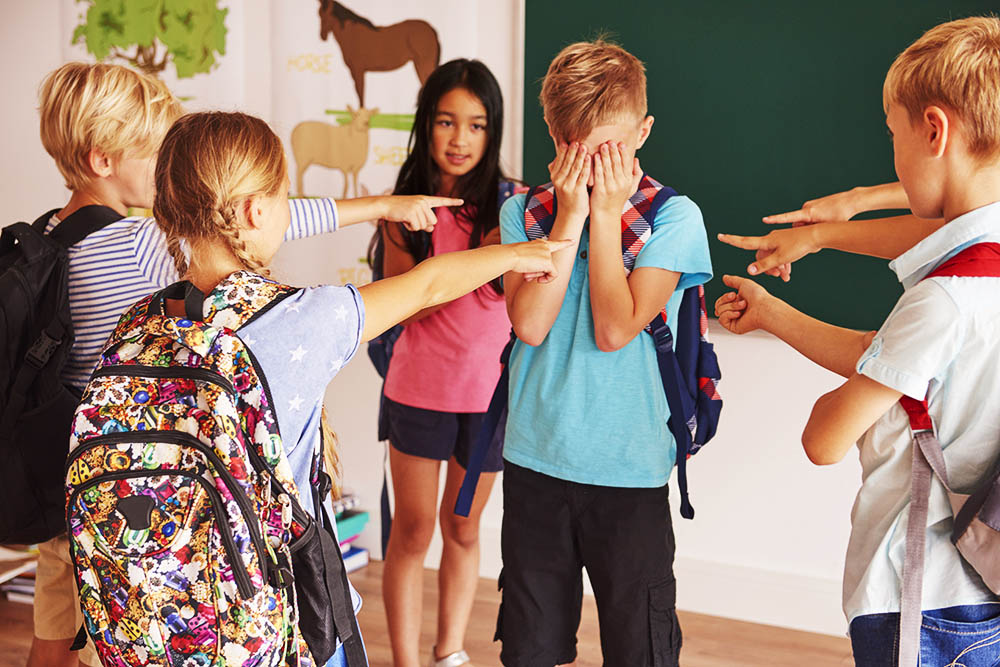The Harmful Effects of Exclusion
Exclusion is the act of deliberately leaving people out of a group or activity, or ignoring them in social situations. It can happen in subtle ways, such as leaving someone out of a conversation or not inviting them to a gathering. It can also happen in more overt ways, like bullying or discriminating against someone based on their race, gender, sexuality, religion, or disability.
Exclusion can have serious negative effects on individuals and communities. It can lead to feelings of loneliness, shame, and worthlessness, and damage self-esteem and mental health. It can also create divisions between people and exacerbate existing inequalities. When exclusion becomes systemic and institutionalized, it can result in social and economic marginalization, poverty, and discrimination.
The harm of exclusion is not limited to those who are being excluded but also extends to those who engage in exclusionary behavior. According to recent research, feeling excluded causes physical and mental distress and can lead to aggression and hostility towards others. Exclusion and discrimination are harmful practices that should be eradicated in all spheres of society.
The Different Forms of Exclusion
Exclusion can manifest itself in many different forms, including:
Social exclusion
Social exclusion occurs when people are denied access to social networks, friendships, and community resources. It can result in social isolation and loneliness, which are detrimental to mental health and well-being. Social exclusion can happen anywhere where people socialize, including school, work, and leisure activities. This form of exclusion can affect people of all ages.
Systematic exclusion
Systematic exclusion is when groups of people are systematically excluded from participating in certain activities or accessing certain goods and services. This form of exclusion is often based on race, gender, sexuality, religion, or disability. For example, women may be excluded from leadership positions in certain industries or communities, or disabled people may be systematically excluded from participating in social events due to inaccessible facilities.
Psychological exclusion
Psychological exclusion refers to the experience of feeling invisible, ignored, or undervalued by others. This form of exclusion can occur in interpersonal relationships or in larger social contexts, such as at work or in public spaces. Psychological exclusion can have severe consequences for mental health and can lead to depression, anxiety, and decreased self-esteem.
Identifying and Stopping Exclusionary Behavior
Recognizing exclusionary behavior is the first step in addressing it. Here are some ways to identify and stop exclusionary behavior:
1. Be aware of your own biases and privilege
Everyone has biases, whether they are conscious or unconscious. It’s essential to examine your own biases and privileges to ensure that you don’t engage in exclusionary behavior. Reflect on your own experiences and how they may have shaped your perspective. Try to empathize with people who are different from you and understand their experiences.
2. Call out exclusionary behavior when you see it
If you witness someone engaging in exclusionary behavior, calmly but firmly call them out on it. Explain why the behavior is harmful and suggest ways to make the situation more inclusive. It can be uncomfortable to confront someone, but doing so can help create a culture of inclusivity.
3. Create inclusive spaces and communities
Whether you’re in charge of a workplace, a school, or a social group, it’s essential to create inclusive environments. Find ways to involve everyone and ensure that everyone feels valued and respected. Encourage open communication and active listening, and avoid language or behavior that may be exclusionary.
4. Amplify marginalized voices
Marginalized communities often have valuable insights and perspectives that are ignored or dismissed. Amplify their voices and give them a platform to share their experiences and ideas. Be an ally and support their efforts to gain equal access to opportunities.
5. Hold yourself and others accountable
Hold yourself accountable for your actions and behaviors and hold others accountable for theirs. If someone points out exclusionary behavior, don’t get defensive or dismissive. Take responsibility for your actions and work to make changes. Encourage others to do the same.
Conclusion
Exclusion is a harmful practice that can have serious negative effects on individuals and communities. It takes many different forms, from subtle social exclusion to systematic discrimination. However, by being aware of our own biases, calling out exclusionary behavior when we see it, creating inclusive spaces, amplifying marginalized voices, and holding ourselves and others accountable, we can work towards a more inclusive and equitable world. All individuals have a responsibility to stop exclusionary practices and promote inclusivity in all aspects of life.
